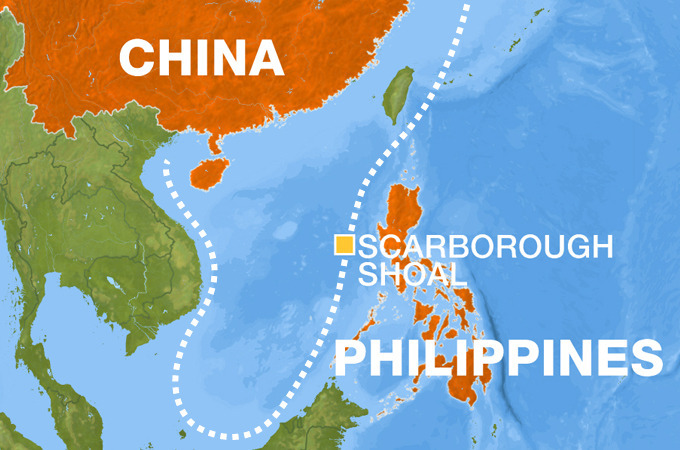The first meeting of the China-Philippines South China Sea bilateral consultation was held in Guiyang, China on May 19, with Chinese Vice-Minister of Foreign Affairs Liu Zhenmin and the newly appointed Philippine ambassador to China, Jose Santiago Sta. Romana, each leading an equal number of officials. The China-Philippines South China Sea bilateral consultation was defined as a vice-minister level mechanism, held alternately in China and the Philippines every six months.

At present, the overall situation regarding the South China Sea is tending to cool down and stabilize. China-US relations have embarked on a normal track of constructive interaction, and the Trump administration’s Asia-Pacific and South China Sea policies are yet to take shape; China has successfully hosted the Belt and Road Forum for International Cooperation, with all ASEAN countries participating; the Duterte government of the Philippines has adopted an independent, pragmatic foreign policy. China-Philippines relations seem to have sailed through the recent dark period. Held against such a background, the consultation sent the following messages:
First, the consultation mechanism is a true milestone. For a long time, China and the Philippines have bickered in the South China Sea regarding territorial sovereignty, maritime demarcation, and resource development, affecting bilateral relations. Under Benigno Aquino III, the Philippines adopted an overwhelmingly pro-US foreign policy, and came into confrontation with China through the standoff at the Huangyan Island, the Ren’ai Reef incident, and the international arbitration, leading to an unprecedented nadir in ties. Since he assumed office, Duterte has embraced an independent, autonomous, pragmatic foreign policy, and chose China as the destination for his first overseas visit outside of ASEAN, in a bid to put the derailed relationship back on track.
With a common desire for constructive interaction, the two parties later agreed in Guiyang to put all maritime topics of common interest on the table and sit down to talk, demonstrating that bilateral ties are not only about economic issues and trade, cultural and people-to-people exchanges and cooperation under the framework of the 21st Century Maritime Silk Road. With the upgrade to incorporate political and diplomatic topics, China-Philippines relations have seen substantial improvement.
Second, the consensus the two countries have reached will not become a useless scrap of paper. In contrast to the Aquino III administration’s unilaterally abandoning bilateral consensus and destroying political mutual trust, the latest consultation was a specific move to implement the initial consensus reached between Duterte and President Xi Jinping during the former’s October 2016 visit to Beijing. The agreed-to mechanism highlights that as long as there is a high degree of political mutual trust, their consensus would not remain mere paper. It showcased the sincere, highly efficient, and pragmatic styles of the leaders of both countries.
Third, it set a positive example for other claimant nations. The arbitration the Philippines launched in 2013 once inspired such claimants as Vietnam to follow suit. Though Vietnam ultimately avoided making that move, it remains one of Vietnam’s alternatives. To the Chinese government, Manila obviously set a very bad example. Besides, the opposition forces, anti-China and pro-US forces inside the Philippines have always been making noises. That Manila overcame various impediments and sat down to talk face-to-face with Beijing has set a fine example for other claimants, reflecting its sense of responsibility for preserving peace in the South China Sea as the current rotating president of the ASEAN.
Fourth, the Philippine government has changed course on the South China Sea issue. The Duterte administration has learned from its predecessor’s unyielding confrontation against China and its eagerness to be the US’ pawn, realizing that arbitration can’t solve the disputes but instead would escalate tensions between the two countries. Changing course and returning to the track of dialogues and consultation is the only way out. Also, as the holder of ASEAN’s rotating presidency in 2017, by advocating a return to bilateral consultation, the Philippines indicates that it would not take advantage its presidency and try to make the South China Sea an ASEAN issue.
Last, nations outside the South China Sea region should stop intervening, interfering and creating obstacles regarding the disputes. Some countries outside the region do not want to see China and the Philippines get too close, or sit down to talk. They are more accustomed to inciting discord and making trouble. With the US getting directly involved, the Philippines unilaterally launched the international arbitration. The fact that just months after the ruling was released, China and the Philippines have come together to discuss the matter shows Beijing and Manila have the desire, capability and wisdom to manage the South China Sea issue, and intervention by outsiders is redundant; it also proves outside intervention is limited and futile. Therefore, the US and other countries from outside the region should refrain from intervening and making new troubles.
Well begun is half done. That Beijing and Manila have smoothly maneuvered the bilateral consultation mechanism for the South China Sea issue in such a short time and made it a platform for confidence-building and maritime and security cooperation is praiseworthy. From the long-term perspective, however, there is a long way to go for the two parties to resolve their disputes over the South China Sea. The process might be long, but the obstacles will be overcome so long as the two parties pursue consultations on the basis of mutual trust and the overall interest of both countries and the whole region.



